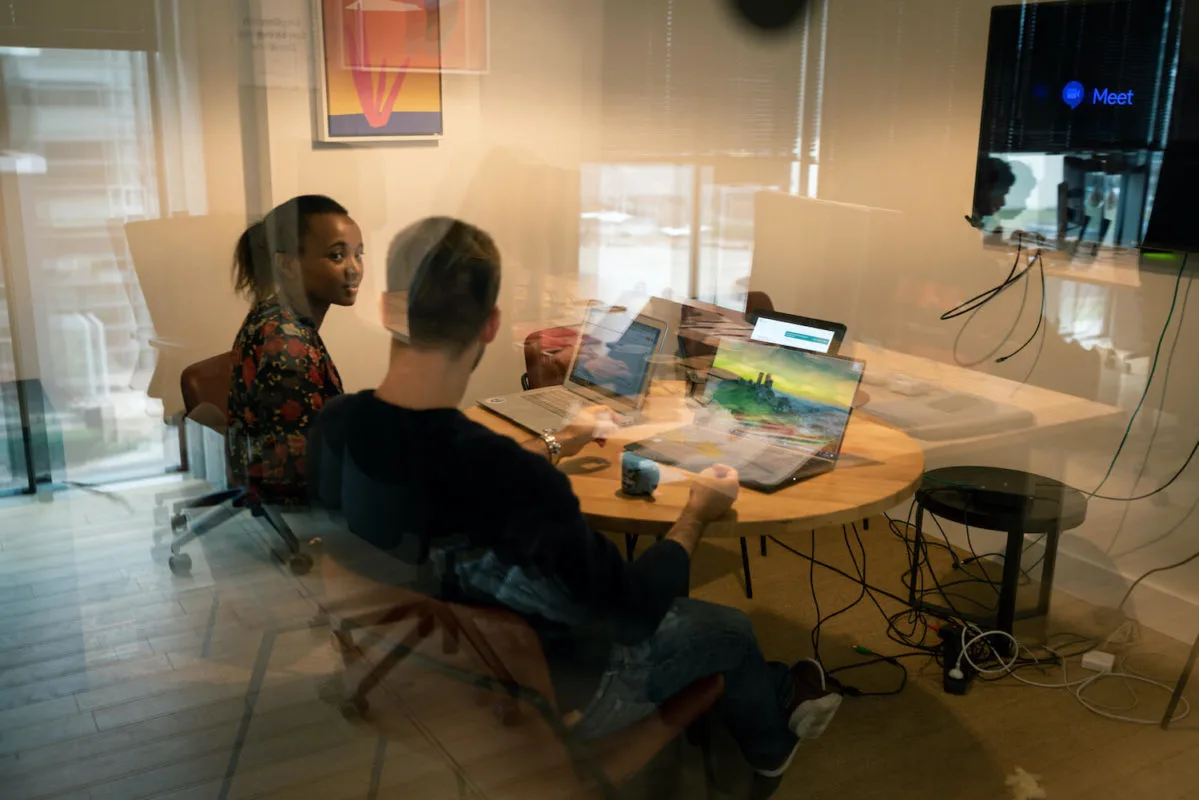Be the first to know
Sign up for a weekly dose of tech hiring news and updates.
There are more disability employment opportunities in the workforce than you might think.
Data from the US Bureau of Labor Statistics suggests that almost 20 percent of people with disabilities were currently employed, representing six percent of the overall workforce in the US.
Making the workforce accessible to people with disabilities is a huge priority. It’s not just a way to increase diversity and inclusion – it’s a civil rights issue, one in which employers are legally compelled to avoid disability discrimination in the workplace.
Looking at it from another point of view, increasing diversity and inclusion within the workforce means increasing accessibility and perspectives as well. Paweł Urbański, a successful entrepreneur, software developer, mountain climber, startup mentor, and consultant – who happens to be blind – tells us how he was able to achieve success – and how recruiters can tackle disability in the workplace and pave a similar road to success for other disabled candidates.
Paweł Urbański is not successful in spite of his disability. He may be successful because of it.
His imagination and working memory – plus his ability to create and remember mental models – need work to their furthest extent for him to have achieved his many accolades, which include winning the world’s most prestigious skiing competition for the blind, and marking a number of firsts across seven mountaineering expeditions. He’s also one of only 950 people in the world to have graduated from the New Ventures Leadership program at Massachusetts Institute of Technology.
Widely recognized as a world-class developer and entrepreneur, Paweł feels comfortable with reading and understanding most popular languages such as JavaScript, Java, Python or PHP. When it comes to his own side projects, he sticks to Python, TypeScript and HTML and has a good understanding of CSS. He admits that there have nonetheless been barriers for him to surmount due to disability discrimination in the workplace.
Condescension is rampant as many companies don’t focus on disability employment as part of their diversity and inclusion initiatives – he remembers being told by recruiters, “how inspiring I’m with all the things I’ve done and know, but they are building an internal innovation team.” He says that in order to be successful at hiring and retaining engineers with disabilities, recruiters need to change their perceptions of reality and void any kind of disability discrimination in the workplace.

Making a More Accessible Interview Process
Paweł says that if a disabled person is applying for a job, it’s very likely that they have the skill set that a recruiter is looking for. For example, if a person applies for a development job, and they’re blind or have a different disability, then in all probability they have developed workarounds that let them perform the job as well or better than an abled individual.
With that said, there may be areas where recruiters need to make accommodations for disability in the workplace. For example, interviews may require a text-to-speech device, an ASL interpreter, a wheelchair-accessible conference room, and so on. For the job itself, recruiters should prepare to have a disability employment policy in place to avoid disability discrimination in the workplace for the fact that applicants may need to modify their tools in order to get the job done.
A common example might be asking for a variable color scheme in order to compensate for color-blindness, or a large-print mode for other vision impairments. As Paweł recommends, “do keep in mind that those candidates may need a bit more time or 15 minutes on the call. Sometimes using a real IDE with a screen reader plugin that makes it that last mile more usable would influence the result. Since all the developers use Chrome or Eclipse plugins, engineers who are blind or have some other limits have plugins for their own toys to make them more productive.”
The last thing to understand is that it’s okay to ask how a disabled person performs their job function. The person you’re interviewing or working with will probably be happy to share the technical details –after all, it’s better that you, as the interviewer or co-worker, know this directly, as opposed to making up your mind based on potential misinformation. “I think that in some cases the recruiters might have been a bit surprised when I showed up, but it was that part of the job to explain to them how I work” says Paweł. Hopefully, the outcome of this conversation helps you examine disability in the workplace so that you can make even better accommodations for an accessible workplace –and helps your disabled co-worker become even more productive.
A Disabled Workforce Brings More Skills to Engineering Teams
As we’ve said, disabled people are more than just diversity and inclusion hires. They are dependable and creative workers who can help bring valuable perspectives to the table. Says Paweł, “You can have one of the most loyal and committed players on the planet. Those people needed to go through many hoops, really fight to prove something one would consider to be a non-issue. Some of them went through the jobwise equivalent training of a navy seal.”
Wouldn’t you like to work with someone like that?
In addition to bringing drive and commitment to the workforce, disabled individuals also help companies become more compliant. After all, companies aren’t just required to have accessible workplaces – they’re also legally required to make accessible software. In fact, the number of ADA Title III lawsuits against inaccessible websites and applications increased by 12 percent in 2019.
According to Paweł, the best way to make sure that your own applications match the requirements set down by the ADA is to hire disabled engineers and test the product with disabled users. “Testing is the key,” says Paweł. “By testing I mean letting potential users become familiar with the software, so they get the use-case for the real-world. Quick testing can uncover major issues, which are mostly related to some coding style, but using the software over a longer period of time can help with optimizing the experience.”
Use Codility to Find a Diverse and Experienced Workforce
If you are serious about your disability employment initiatives and want to hire more disabled personnel and make it easier for them to work, use Codility. Paweł has worked with Codility personally to make the platform more usable, more practical, and more compliant. Plus, with our reliable candidate insights and predictive scoring, you’ll be able to create a more powerful development workforce – no matter where they happen to live, or what they’re able to do. For more information, request a demo of Codility today.
Ensure bias is removed from your process
Book a demo with us and we’ll give you a guided tour through how your team can use Codility

The latest news and articles
Announcing Codility Skills Intelligence: The Future of Skill-Based Talent Management
Improve workforce planning, optimize staffing decisions, and maximize L&D investments with skill insights from Codility Skills Intelligence.
Read more